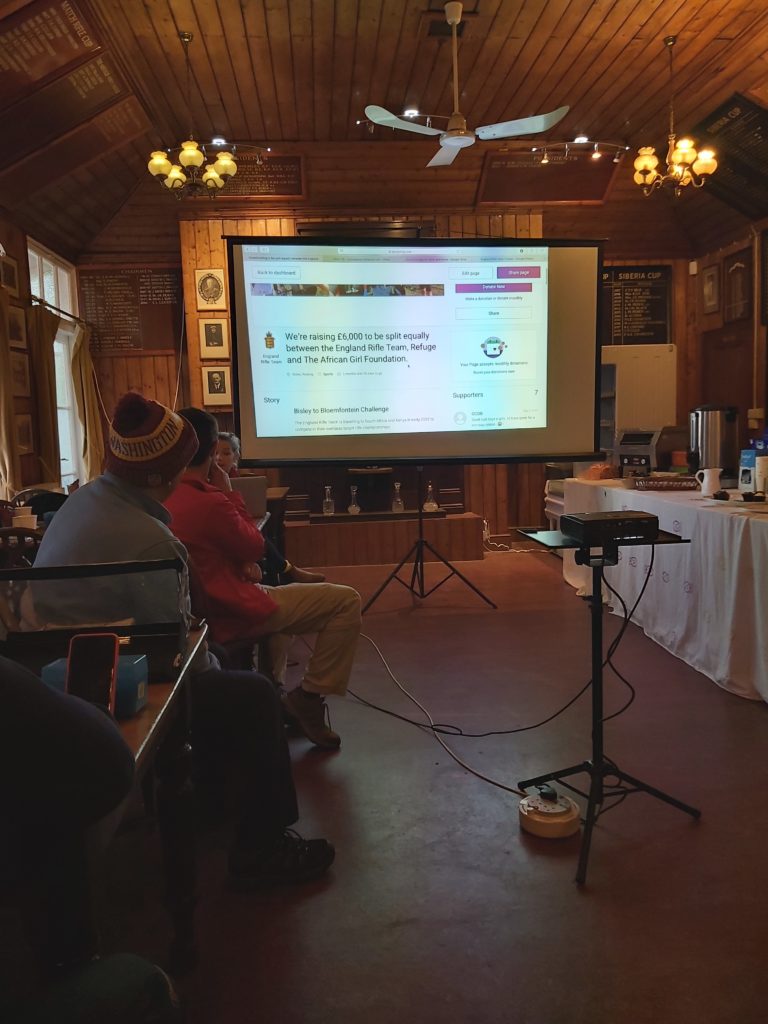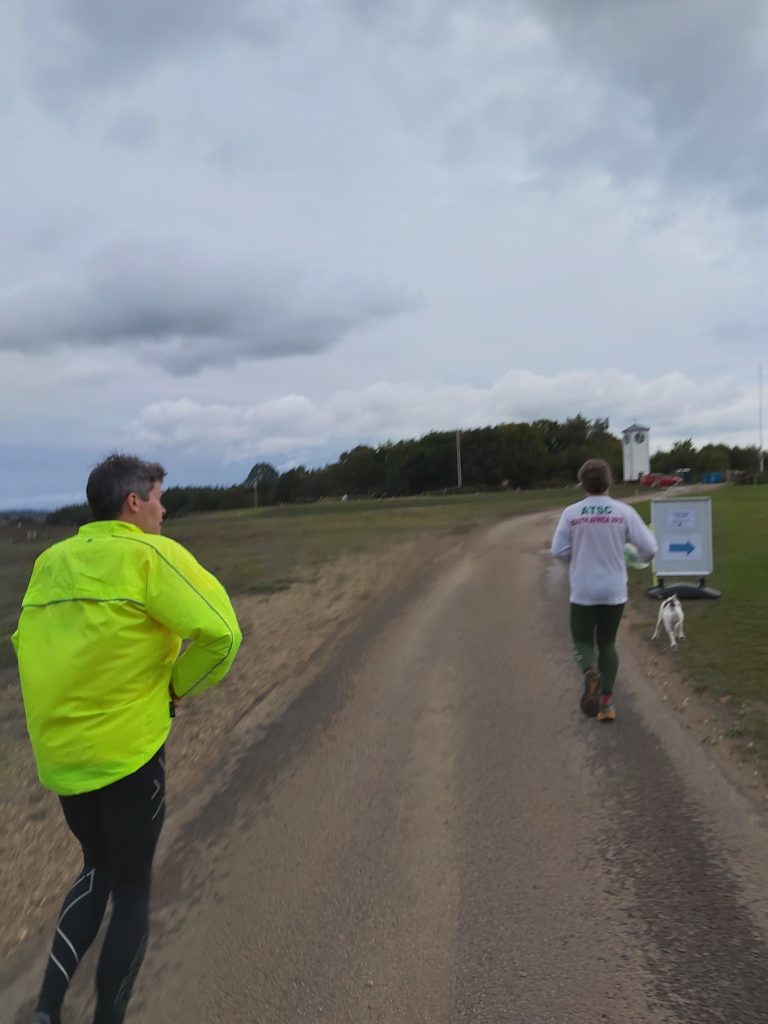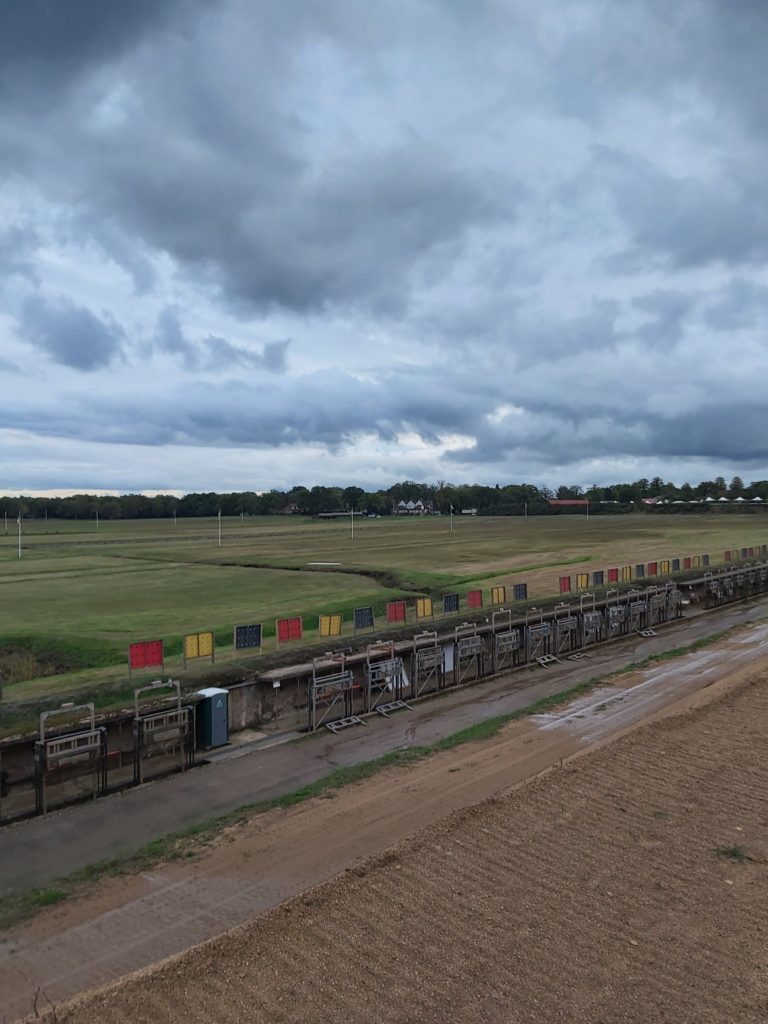The team’s first in person training weekend took place in early October. Alastair Brown reports

The weekend of 3rd/4th October 2020 was the first team training weekend ahead of the tour, which due to COVID has been pushed back a year to March 2022. One of the consequence of this delay in tour dates is that a good number of the team members may get selected for the Great Britain Rifle Team to South Africa in 2022, which is also scheduled to compete in the same tournament and team competitions in Bloemfontein. In anticipation of this, as part of the team’s contingency planning, Captain Andy Barnes has selected a pool of 8 standby reserves that may get called up once final selection of the GBRT SA 2022 is announced in August 2021. For all of us that have been adapting to the new shooting rules and regulations around COVID, this highlights that for some, the pandemic also presents new opportunities.
So it was on this basis that the newly enlarged team and reserve training squad arrived into Bisley on a wet and windy Friday night, in preparation for what was sure to be a very wet weekend. For many of us who enjoyed a delayed and uncharacteristically balmy Imperial Meeting last month, following a significantly shortened 2020 full-bore shooting season, it was inevitable that we would have to dust off our wet weather drills to great effect this weekend.
Saturday morning kicked off in the North London Rifle Clubhouse with the Captain’s welcome and presentation of tour and training weekend objectives. This was followed by brief introductions by each of the team management and training squad. Then one by one, each of us had our rifle chamber measurements taken, so that ammunition could be made up in batches to fit the exact dimensions of each of our rifles. This would ensure that every shottist (South African for shooter) was well prepared for optimum performance during the training weekend. A gentle reminder that from this point on until the end of the tour in 2022, we are all operating together under the ethos of ‘the aggregation of marginal gains’.
Chamber-measuring completed, it was now the turn of the team coaches, led by Derek Lowe, to run through some of the firing point drills that we would be conducting on the firing point over the hill on Saturday afternoon. The first drill – for those of us who have an eagle-eye as part of our long-range optical set-up – was going to involve removal of the eagle-eye mid-way through the shoot. Successful international rifle teams run scenario planning for a diverse range of situations that might reasonably be expected to unfold during any given team match. On the dry, dusty plains of Bloemfontein its not uncommon to experience a flash downpour of heavy rain part-way through a shoot, so we need to be ready to take out a steamed-up eagle-eye lens without disruption to our rhythm, especially in the middle of a big team match. This exercise tested several things – how quick and easy is it to remove our eagle-eye whilst in the middle of a shoot? What happens to our elevation and wind zeros once its been removed? What happens to our sight picture without an eagle-eye?
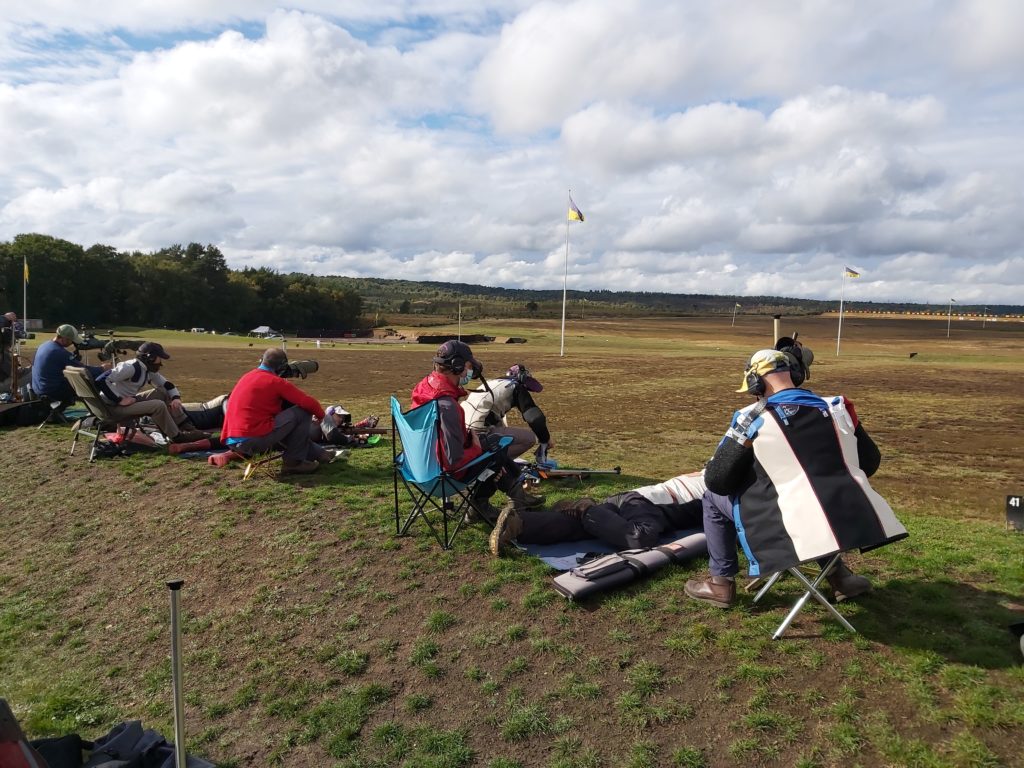
While we pondered the answers to all of these questions, the heavy rain of Saturday morning began to let up and the sky brightened. This was a welcome development, given that we would be spending the afternoon on the 1000x firing point. We formed into our respective target groups for lunch in the NLRC dining room, before heading out to collect our freshly pressed ammo (thanks to Andy Daw and Adam Leech for all their hard work – lollypops all round) and out to the range.
Arrival onto the firing point was accompanied by COVID-related facemask drills, familiar to those of us lucky enough to shoot the Imperial Meeting in September. For anyone not familiar with this, shottists are for the time being required to wear a facemask whilst heading onto and from the firing point. This provides an additional element of distraction training for the team, as we each had to remember to put our facemask on under our ear defenders before leaving the point. Hopefully these drills will be but a distant memory by the time we all head off to South Africa in 18 months’ time.
The eagle-eye drills in the first shoot of the afternoon presented different challenges to each of us. This proved to be a valuable exercise which tested a number of key aspects of our rifle set-up. Finding ways to improve and speed up the process of removing or adding in different pieces of equipment will almost certainly finds its way into the process drills section of our individual winter training plans.
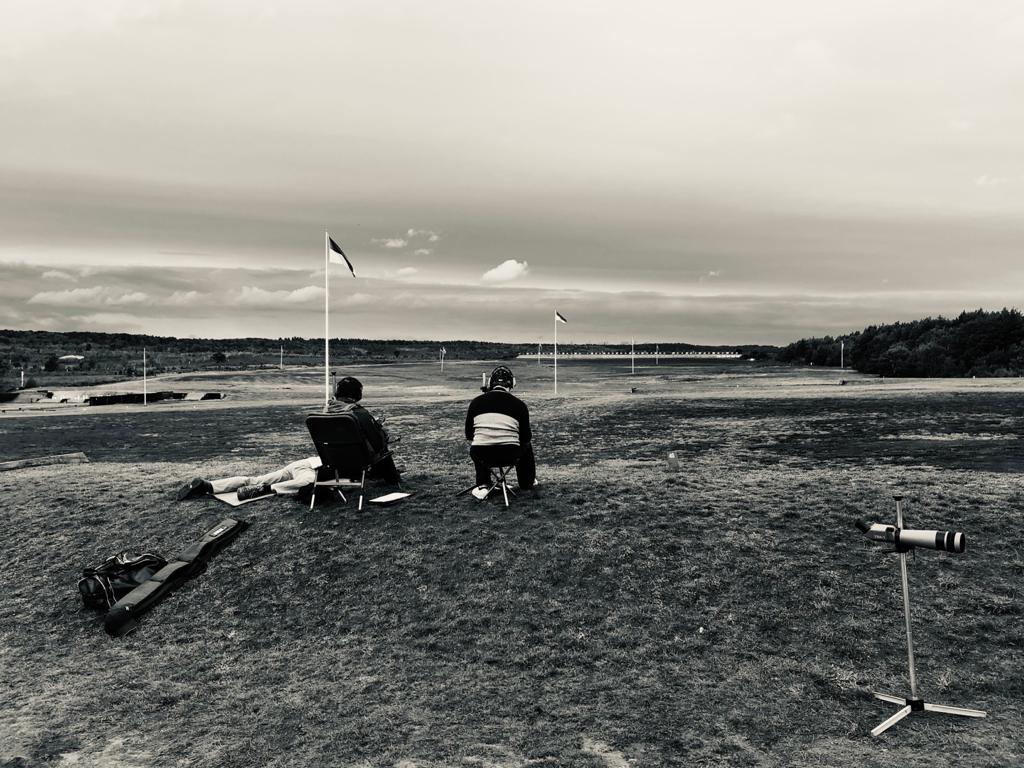
Each shottist then completed a second (uninterrupted) two and ten, before we were all treated to a live demonstration of rapid firing in dusk or near night-time conditions by Ed Compton, who finished with a 50.7 in quick time just before the hooter sounded.
Range based activities now over, the focus of the evening was on team bonding, initiated with sundowners on the veranda of the North London Rifle Club. Adam Leech’s rum punch proved popular and thus lubricated we headed into dinner, representing a further opportunity to get to know each of our fellow target team members. Due to the ongoing COVID restrictions all of the clubhouses on camp are required to shut by 10pm, which meant an early night and plenty of sleep was the order of the day. Or was it?
For some of us, Sunday morning arrived far too quickly. Furthermore, it was accompanied by yet more heavy rain. This was certainly going to test our wet weather drills to the limit. Luckily this had been anticipated and, as if by magic, three large gazebos were quickly erected by the team working together in harmony behind the 300x firing point.
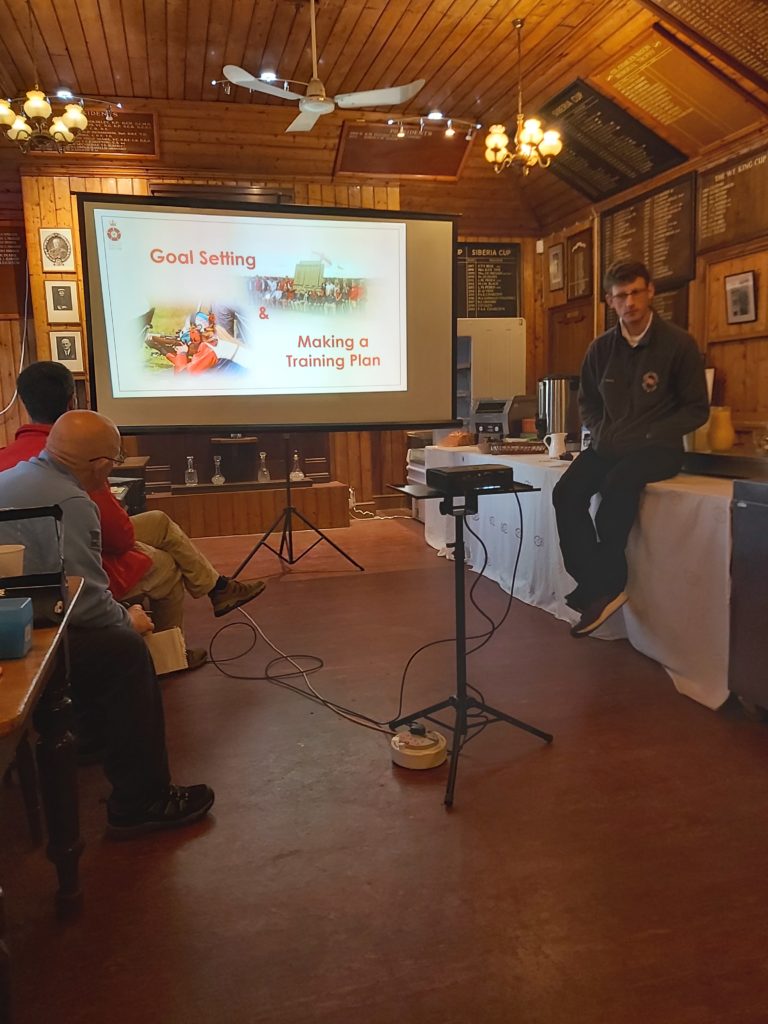
Derek ran us through the firing point drills for Sunday morning. Today was all about timing – specifically measuring how many seconds each shot of each firer took to be released after the ‘go on’ command from the wind coach. In international team match conditions, the quicker each target team completes each course of fire at each distance, the fewer wind changes we will be exposed to, saving valuable points, which could secure the win. Aggregation of marginal gains may have been mentioned again. This training exercise was a revelation for those of us who consider ourselves to be slower shooters. All ten of my shots were off in under three seconds! This highlighted how much tolerance there actually is in the quality of the sight picture on trigger release, versus the benefits to the team of proceeding through the shoot at pace. Something else to add to our list of process drills during our winter training programmes.
Gazebos quickly dismantled, providing us with another opportunity for teamwork, we headed back to the NLRC for a de-brief and round up of the weekend’s activities and plans for the next few months as we head into winter. Given the timing of the tour to South Africa and Kenya in what would normally be the early part of our UK shooting season, it is essential that we each develop and adhere to an effective winter training programme. This will include a significant amount of time dry firing or training on electronic ‘scatt’ targets indoors, in addition to reviewing our individual shooting processes to identify areas for improvement.
We also have a mountain to climb in terms of securing team sponsorship and fundraising for our two chosen charities, The African Girl Foundation and UK based charity Refuge.
Team and Charity Fundraising: https://www.justgiving.com/crowdfunding/bisleytobloemfontein
England Rifle Team Website: https://englishtwenty.org.uk/sakenya2021
